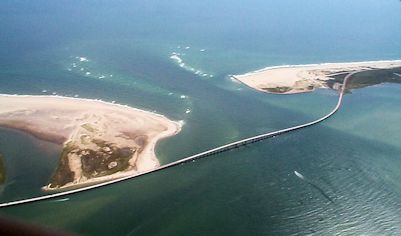WASHINGTON — When it passed last month by a near unanimous vote, the first federal water resources bill in six years offered a jarring contrast to the shutdown paralysis of the preceding week.
But as the bill heads to a conference committee it still has some skeptics on the coast of North Carolina, chief among them 3rd District U.S. Rep. Walter Jones, a Republican who cast one of only three no votes.
Supporter Spotlight
Jones raised two main objections to the legislation — whether it prevents the Army Corps of Engineers from receiving local money to continue dredging shallow draft inlets and how a provision de-authorizing billions in already authorized projects would affect federal involvement in protecting and maintaining Oregon Inlet on the Outer Banks.
After voting against the $8.2 billion bill Jones issued a statement saying a plan to authorize billions in funding for new projects while de-authorizing others would have a negative effect on work in North Carolina.
 Walter Jones |
 Warren Judge |
“The truth is Uncle Sam cannot afford to maintain the projects he has already built. We see that every day in the Third District. The federal government has almost completely stopped paying for maintenance dredging of coastal inlets in North Carolina and across this nation. As a result, many of these waterways are shoaling badly, and the communities that depend on them are significantly impacted,” Jones said in the statement posted to his congressional web site.
The bill, he said, would create “even more projects that would then compete with existing projects like the Oregon Inlet for a rapidly shrinking pool of federal waterway maintenance dollars.”
While it hasn’t gotten a lot of attention along the N.C. coast, the water resources bill has raised concerns in Dare County. Oregon Inlet has long been an issue in the county, which is also the beneficiary of much of its economic impact.
Supporter Spotlight
“We’re certainly keeping an eye on it,” Warren Judge, chair of the Dare County board of commissioners said last week.
Judge said he shares concerns about the bill’s effects on a long-proposed project to build twin jetties to stabilize the inlet and how the Corps will interpret the bill’s restrictions on funding.
In an interview last week, Jones’ Legislative Director Joshua Bowlen said the congressman would press for changes during the conference process, particularly parts he contends are too loosely written.
“A lot of this boils down to how the Corps interprets [the bill],” he said.
New Bill, New Rules
When it passed the U.S. House on Oct. 23 by a vote of 417-3, the Water Resources and Reform and Development Act of 2013 was hailed as a rare moment in the current highly partisan and polarized atmosphere in the chamber.
The 163-page bill won not just the support of both parties in the House, but drew support from members of the Senate, which passed its own scaled-down water resources legislation earlier this year.
The Obama administration also lent support to the bill, calling for its passage despite reservations about changes to environmental permitting — the bill sets a 3-year, $3 million limit on feasibility studies — and the expansion of the federal role in maintaining ports.
The expectation is that several issues, including those outlined in more than 20 amendments proposed on the House floor, would be considered when a conference committee takes up reconciling the different versions of the bill passed by the House and Senate.
Although the bill’s champions stressed that it contains no earmarks, it does authorize funding for dozens of specific projects nationwide including funding for final feasibility studies to move forward on 23 stalled projects. North Carolina would see $23 million for environmental restoration in the Neuse River basin, $132 million for hurricane damage risk reduction at the New River Inlet and $106 million for hurricane risk reduction at Surf City and North Topsail Beach.
To balance the costs and Washington’s sequestration-driven budget cutting, the legislation sets up a process to de-authorize $12 billion in projects that were previously authorized, but haven’t been built.
Bowlen said although no specific projects are named, the guidelines for de-authorization would almost surely include the Oregon Inlet jetties, first authorized under the 1970 Rivers and Harbors Act.
Judge said de-authorization appears to be the “final blockade” against the jetty project and he’s concerned about further reductions in the federal government’s role in maintaining the inlet. “It’s been underfunded for the last decade or so,” he said.
The promise of a more stable inlet either through the original jetties or a modification of the plan has been a major driver in the Dare County economy. A 2006 analysis for the county put the total economic impact of the inlet in four categories — commercial fishing, boat building, recreational fishing and tourism and seafood packing and processing — at nearly $683 million and 9,851 jobs.
Bowlen and Judge said if the federal government backs away from its commitment to the inlet, it would have devastating consequences to the local economy.
Jones’ other major objection to the bill could have consequences for the state’s other inlets as well.
New Interpretation?
 Some fear the bill could lead Congress to deauthorize the long-proposed jetties at Oregon Inlet. |
Section 108 of the bill changes the requirements for outside funding contributions for Corps of Engineers projects. Under the new rules projects would be limited to “planning, design, or construction of an authorized water resources development study or project, or the repair, restoration, or replacement of an authorized water resources development project that has been damaged by an event or incident that results in a declaration by the President of a major disaster or emergency . . .”
Bowlen said Jones, who drafted an amendment to remove the requirement, is wary of assurances from the bill’s backers that the language would be broadly interpreted and would not shut down dredging projects. As written, Bowlen said, Jones fears that the bill could prohibit the Corps from receiving funds for regular inlet dredging not related the storm damage despite the state’s willingness to pick up the tab.
“It’s defined in such a way that it would limit North Carolina or any other local government,” he said. “They could only contribute if the project is for damage in a federally declared disaster.”
Officials with both the Army Corps of Engineers Wilmington District office and the Corps’ legislative affairs office in Washington declined to comment for this story citing policies on pending legislation.
For legislators and local officials who have scrambled to find money to replace dwindling federal funding for dredging the state’s shallow draft inlets, the prospect that Corps might not be able to receive the funds is frustrating.
N.C. Rep. Chris Millis, R-Pender, said the inlets are critical for coastal communities and there has to be a reliable a path forward for maintaining them.
“Over the past four to six years the federal government has walked away from its responsibility,” he said.
Judge said he doesn’t understand the bill’s authors reasoning for narrowing the requirements given successful examples of the state assisting in maintaining channels. “It’s beyond my imagination why,” he said.
Dare officials, he said, have also heard assurances from the bill’s backers that the disaster requirement won’t mean quite what it says in practice, but he’d still like to see the language cleared up. “There are different interpretations by different people,” he said.







